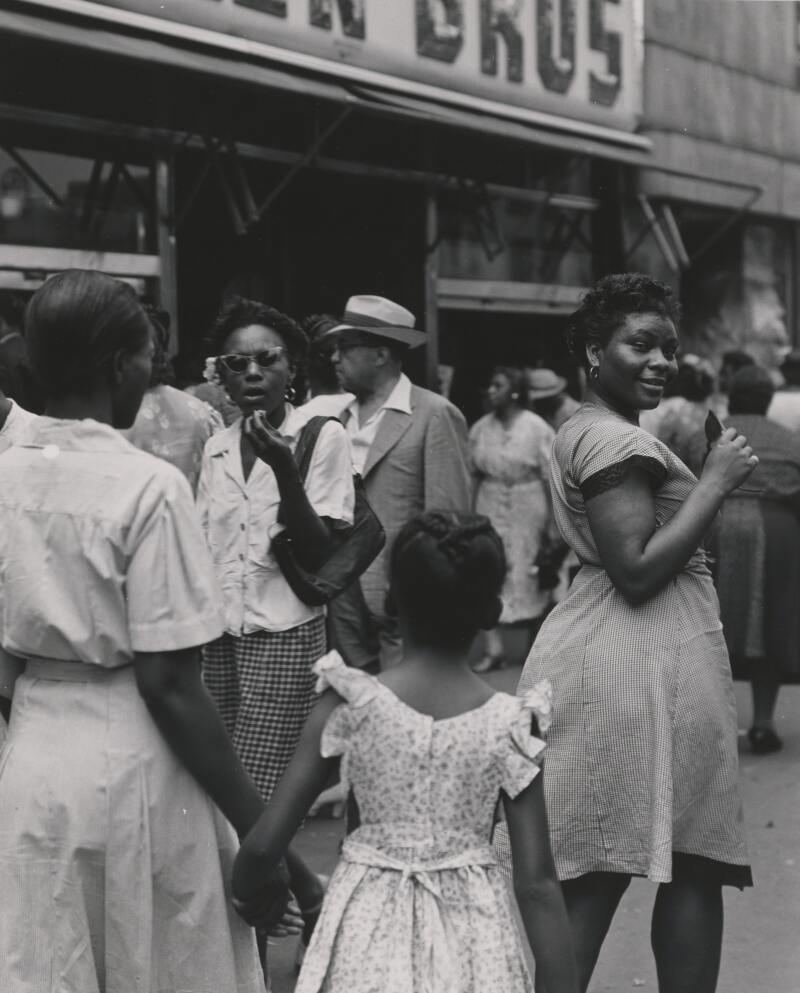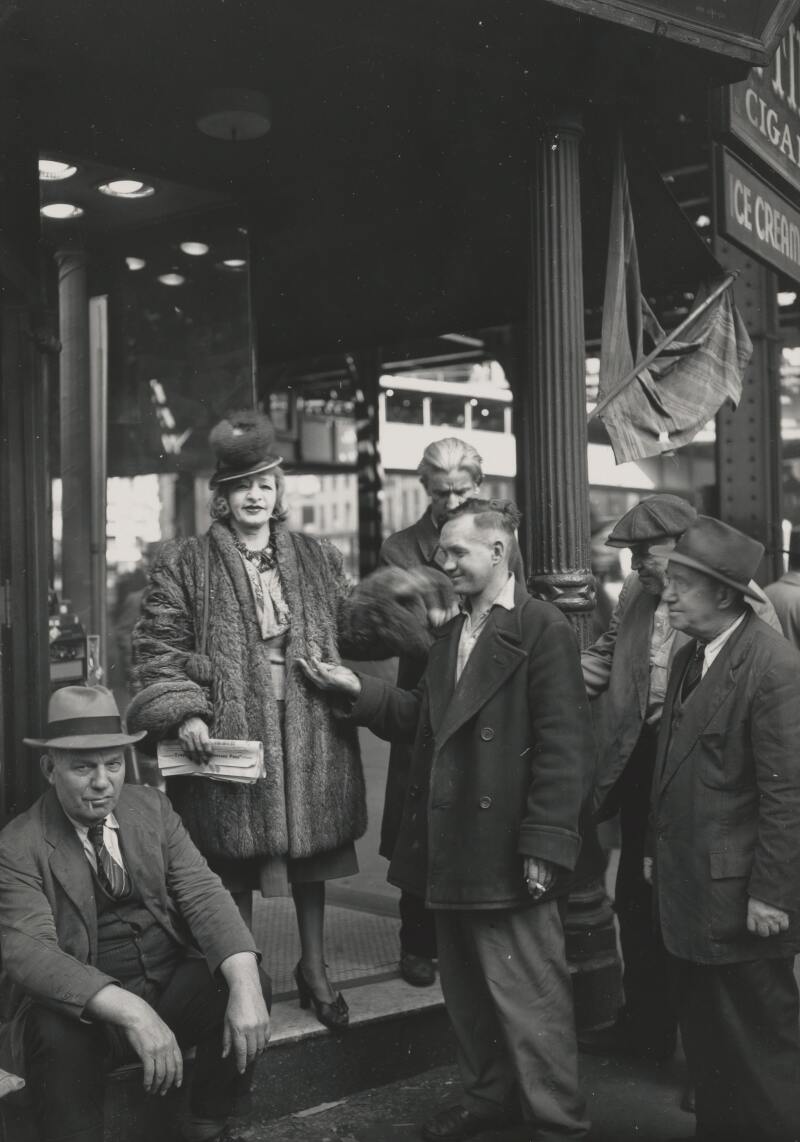Like so many of us do today, Todd Webb learned about a new city through the viewfinder of his camera—although back in 1945, his camera was hardly pocket-sized. Freshly discharged from the U.S. Navy following World War II, Webb landed in New York and, shouldering his heavy photography equipment, began to explore both the city and a fledgling career as a professional photographer.
In September of 1946, the Museum of the City of New York featured Webb’s intimate and curious shots of New York at a solo exhibition, I See A City. Now, 71 years later, the museum’s new retrospective revisits Webb’s postwar years. A City Seen: Todd Webb’s Postwar New York 1945-1960 is a chronicle of the city’s growth and humanity told through glimpses of everyday moments. In a press release for the first exhibition in 1946, museum curator Beaumont Newhall wrote, “Above all Todd Webb’s portrait of the city is dignified. It is revealing, it is not always pleasant, but it is a portrait which all New Yorkers will respect and appreciate.” The same holds true for Webb’s work in the years that ensued.

From Empire State Building, New York (Looking Southeast), 1946
Courtesy Museum of the City of New York and the Todd Webb Estate.
Webb fell in love with photography in 1940, after taking a master class with renowned nature photographer Ansel Adams. But while Adams was known for his stately pictures of the United States’ National Parks, Webb was more drawn to urban cityscapes and the people who brought them to life.
![[Lexington Avenue, Near 110th Street, Harlem], 1946](https://afar.brightspotcdn.com/dims4/default/8e988c6/2147483647/strip/true/crop/3000x2204+0+0/resize/800x588!/quality/90/?url=https%3A%2F%2Fk3-prod-afar-media.s3.us-west-2.amazonaws.com%2Fbrightspot%2Fad%2Fe5%2Ff8174919a6b4f656df4f73e30acf%2Foriginal-3.jpg)
[Lexington Avenue, Near 110th Street, Harlem], 1946
Courtesy Museum of the City of New York and the Todd Webb Estate.

Fulton Fish Market Wharf, 1946
Courtesy Museum of the City of New York and the Todd Webb Estate.
Born in Detroit, Webb lived many lives before his time in New York. He was a successful stockbroker in Detroit until the stock market crash of 1929, then a less-successful prospector in California, a forest ranger, and, finally, a Navy photographer in the South Pacific theater during World War II.

The Battery, New York (Peanut Peddler), 1945
Courtesy Museum of the City of New York and the Todd Webb Estate.
“He did an amazing job capturing the beauty and dignity of everyday life in a tumultuous period,” said Sean Corcoran, museum curator of prints and photography at the Museum of the City of New York. “At the same time, there is something timeless about his use of photography as a means of familiarizing himself with new surroundings, as a way to explore different neighborhoods and see what makes the city tick.”

125th Street, Harlem, New York, 1946
Courtesy Museum of the City of New York and the Todd Webb Estate.

3rd Avenue from 42nd Street El Station, New York, 1945
Courtesy Museum of the City of New York and the Todd Webb Estate.
In both 1955 and 1956, Webb was awarded John Simon Guggenheim fellowships to document the trails blazed by emigrant settlers moving to Oregon and California during the mid-1800s. Around the same time, the Swiss photographer Robert Frank crossed the country for a photography project that would later become The Americans. But while Frank drove, Webb got to know the American West much the same way he had become acquainted with New York City—by walking every step of the way.

Mazie, Queen of the Bowery, New York, 1946
Courtesy Museum of the City of New York and the Todd Webb Estate.
Webb became a successful photographer, and a contemporary and friend to legendary photographers like Ansel Adams, Alfred Steiglitz, Harry Callahan, and Berenice Abbott, but he never sought fame. In fact, Webb’s work is often forgotten. But his documentary work in New York, Paris, and the American West now provides an important look at the relationship among history, place, and people.

125 Street and Broadway (Summer Streetcar), Harlem, New York, 1946
Courtesy Museum of the City of New York and the Todd Webb Estate.

Near Fulton Fish Market, New York, 1946
Courtesy Museum of the City of New York and the Todd Webb Estate.
A City Seen: Todd Webb’s Postwar New York 1945-1960 is on exhibit at the Museum of the City of New York through September 4, 2017. Excepts from Webb’s journals are displayed as well, providing insight into the artist’s motivations and emotions. See more of Webb’s work online at the Todd Webb Archive.
>>Next: 8 Surreal Photos That Showcase the Dreams and Fears of Refugee Children











